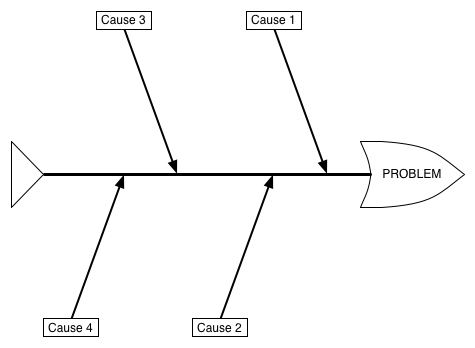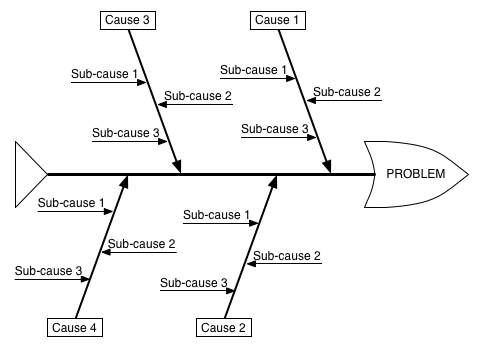Problems are always part of the businesses. The task of an entrepreneur is to detect and solve them. But besides discovering and removing the problems, entrepreneurs have to pay attention to their preventive removal, so they would never again harm the business. The cause and effect diagram, or as it is called a fishbone diagram, can help you in this.
What I can see when it comes to the problem-solving process that entrepreneurs employ is the following:
- They partially solve the problem.
- They solve the problem without removing the reasons for its occurrence.
- They recognize reasons that are not essential for the occurrence of the problem.
- There is a lack of an entrepreneur to see the problem-solving process as a business improvement process.
How can you avoid such undesirable things in your business?
The answer is simple, proper analysis of the situation, identifying root causes for the occurrence, and removing them, which will provide such a case never again to be part of a process.
Among the various tools for such an analysis is a cause and effect diagram, also known as a fishbone diagram or Ishikawa diagram.
What is a Cause and Effect Diagram (Fishbone Diagram)?
The Cause and Effect diagram was developed by Professor Kaoru Ishikawa, a pioneer in quality management from the 60s in the last century.
The diagram is called a fishbone diagram because the final look will be in the form of a fishbone.
Although the basis of the development of the diagram was to improve the quality, this technique can also help analyze various business processes such as detection of causes, detection of “bottlenecks” in the manufacturing process, improvement of various processes, etc.
The technique is good because of a unique method that enables creative thinking and breaks down things into the reasons to come to the right solution.
How Can You Use the Tool?
To use this tool, you need to have a problem that needs a solution. Is there business without the problems?
I will try to cover the necessary steps in the implementation of the technique in the problem-solving process.
Step 1: Identify the Problem.
The first thing that you need to do is to identify the problem you want to analyze. A good starting point is to describe the situation, consequences for your business, possible reasons, responsible departments, etc.
Once you define the problem, you can construct the diagram, as shown in the image below.

Step 2: Identify the Main Causes of the Problem.
In this case, the problem is the effect of some causes, and therefore, the second step must identify all possible reasons for this situation.
When it comes to business problems, it is best to start with subjects or business elements that can cause this problem. These elements can be people, procedures, materials, skills, systems, equipment, etc.
The task of this step is to brainstorm as many as possible potential reasons for the problem.
Once you identify all the main reasons, you can add them to the diagram, as shown in the image below.

Step 3: Identify all Possible Sub-causes in Each Main Cause.
Since you already have the main reasons, each of these causes results from more sub-causes. If you ask why for each primary cause, you will have many answers that can merely become sub-causes. For example, if one of the main reasons for late delivery is the production process, we can have possible sub-causes as follows:
- Long preparation time,
- Not optimized layout in the plant,
- Wrong norms,
- Too many errors in the production process,
- Wrong planning, etc.
There will probably be additional reasons that you will need to break down into the diagram for each of these reasons. For example, if you make errors in the production process, possible reasons can be:
- Employee training,
- Received raw materials are of low quality,
- There are mistakes in the maintenance of technological equipment.
After you identify all possible sub-causes for each leading cause into the tiniest detail of breakdown, you can add them in the diagram as in the image below.

Step 4: Analyze the Diagram.
Once you finish the previous step, you will already have a complete diagram that shows all possible causes of the problem. This way will allow you to identify more than one reason. In business, only one cause for a problem is not the usual case. The problems are complex and require more complex solutions.
Therefore, in this step, you will need to analyze the diagram. The analysis will require detailed consideration of each cause by recording the state of the field, conversations with responsible people, interviewing, meetings, etc.
The analysis aims to prepare a project with specific steps to solve the problem and eliminate all possible causes, so they will not occur in the future.
Remember that solving one problem brings another one you will need to solve. It is always true!




